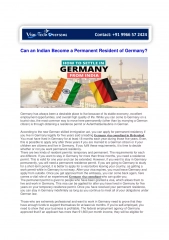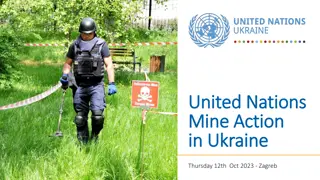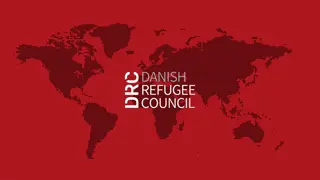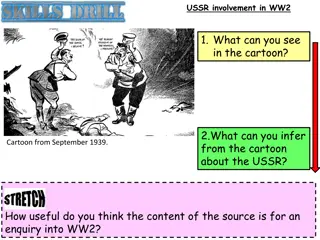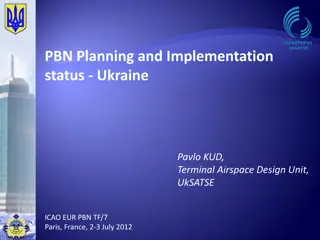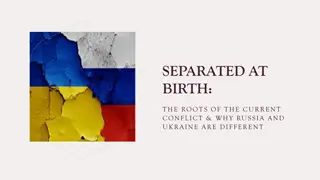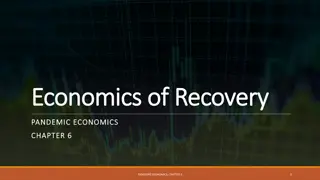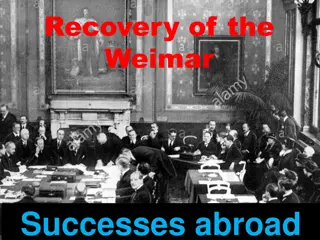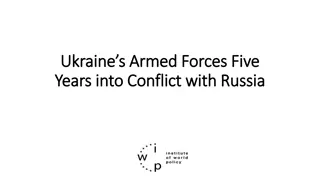Economic Recovery Strategies: Lessons from Post-WWII Germany and Ukraine Today
Post-World War II economic reconstruction in Western Europe, particularly in West Germany, serves as a model for Ukraine's recovery. By examining historical approaches such as the Marshall Plan and infrastructure rebuilding, insights can be gained towards revitalizing Ukraine's economy post-conflict.
Download Presentation

Please find below an Image/Link to download the presentation.
The content on the website is provided AS IS for your information and personal use only. It may not be sold, licensed, or shared on other websites without obtaining consent from the author.If you encounter any issues during the download, it is possible that the publisher has removed the file from their server.
You are allowed to download the files provided on this website for personal or commercial use, subject to the condition that they are used lawfully. All files are the property of their respective owners.
The content on the website is provided AS IS for your information and personal use only. It may not be sold, licensed, or shared on other websites without obtaining consent from the author.
E N D
Presentation Transcript
Economic Recovery in Post-WWII West Germany and Ukraine Today Barry Eichengreen University of California, Berkeley June 22, 2023 1
Post-World War II economic reconstruction in Western Europe, and in West Germany in particular, is widely cited a template for getting postwar Ukraine back on its feet. The Marshall Plan is an example of how to organize aid to Ukraine, both: In form, which is to say as grants rather than loans And in structure, with a head office in a national capital but also program officers on the ground and ownership on the part of the recipients. The European Payments Union and European Coal and Steel Community illustrate how economic integration can support reconstruction. They are consistent with the presumption that integration with the European Union, culminating in EU membership, should be integral to Ukraine s reconstruction. The rapid recovery of the West German economy during the Marshall Plan years and then the Wirtschaftswunder in the third quarter of the 20th century thus demonstrate what is possible. 3
Topics Network infrastructure Housing Balance of Payments Organization of Aid Policy Implications 4
For better or worse, Allied bombing attacks on Nazi Germany and Russian missile attacks on Ukraine share features in common Attacks on German cities were intended to demoralize the civilian population. Increasingly from mid-1944, the Allied bombing campaign focused on knocking out key German infrastructure, such as the electric power grid and the railway system. For example, the notorious firebombing of Dresden in February 1945 was motivated by the fact that the city was a major center for Nazi Germany s rail and road network. More than 40 percent of the urban housing stock was destroyed in the course of bombing attacks (more on this in a moment). Although this was largely corollary damage of attempts to disable key war industries and critical infrastructure. 5
Postwar reconstruction of network infrastructure was relatively quick Already in the summer of 1946, less than a year following Germany s surrender, all bridges and railway lines in the American and British zones of occupation were rebuilt. By late 1947, prior to initiation of the Marshall Plan, the number of locomotives was back up to its prewar peak, and across Continental Western Europe railway freight haulage had recovered to 1938 levels (DeLong and Eichengreen 1993). 6
A key difference then was the presence of occupation forces The occupiers needed bridges, rails and roads for their own immediate purposes. Postwar Ukraine, having driven out the occupiers, may see competing priorities. Still, historical experience suggests that damage to network infrastructure is unlikely to be a lasting constraint on Ukraine s economic recovery. The speed with which Ukraine has succeeded in restoring electricity to its cities and key industrial facilities following Russian missile attacks is consistent with this history. 7
East/West vs. North/South To be sure, Ukraine s task is complicated by the need to reorient rail and power networks away from Russia and toward Europe, requiring among other things integrating its gas pipeline network with European LNG terminals and changing its railway gauge. But it is reassuring that after World War II a similar reorientation of West German infrastructure away from what had become the Soviet zone of occupation in favor of a North-South orientation did not derail, as it were, the process. 8
Reconstruction of the housing stock was much slower Some 2.3 million dwelling units in what became West Germany were destroyed between 1939 and 1945, and equal number suffered significant damage. More than 2 million units were needed for the inflow of evacuees and expellees from Eastern Europe, and another million were needed to meet the needs of newly formed families. Yet in the first five postwar years, only 1 million additional dwelling units became available, chiefly through repairs. The 1950 West German housing census recorded 2 million individuals as living in shelters or make-shift hovels and many others doubling up. Only 40 percent of households had a dwelling unit for themselves. 9
Creating problems for recovery The number of residents of the largest cities, which suffered the most destruction, fell significantly, while the population of small towns and villages increased. Industrial agglomerations being urban, there was a mismatch between labor supply and labor demand. Low unemployment in urban areas coexisted with unemployment rates as high as 15 and 20 percent in agrarian regions. 10
Creating problems for recovery Supplies financed by the Marshall Plan and the recovery of domestic production largely eliminated raw material and energy shortages by 1950. Capital equipment, valued at constant prices, was back up to 1938 levels (see right). Yet industrial production on the territory of what was now West Germany was still 12 percent lower than in 1939 1950 being two full years after the famous currency and economic reforms in the three western zones. Labor shortages where the most efficient large industrial plants were located accounted for the difference. 11
Ukraine may face similar (but not identical) problems People are where housing is not, and housing is where people are not. Going forward, there may be a continued flow of Ukrainians west from Donetsk and Luhansk. Firms relocating to western Ukraine in order to be closer to the EU market may be unable to find workers in the absence of an adequate housing stock. These problems may be compounded if Ukraine fails to re-attract residents who fled the country during the war. 12
And not just the location but composition of employment will change Ukraine was already undergoing a transition from industry to services, which will now accelerate as a result of the decline of Russian-facing industries. It may be that employment in high-tech services can be disbursed; the rise of work-from-home points to this possibility. But the history of high tech suggests that agglomeration economies are important for innovation (think Silicon Valley), and that tech workers value urban amenities (think San Francisco). 13
The fact that the occupation authorities after World War II did not prioritize rubble removal or housing reconstruction, where the Ukrainian government presumably will, suggests that Ukraine may be able to reconstruct its housing stock faster. Rubble removal has been mechanized in the course of the last 75 years. The EU committed to supporting this at the London conference this week. (But do they mean land mines only?) Recourse today to modular and prefab housing points in the same direction. Finally there is the fact that Ukraine s population has declined considerably over the last three decades, from some 51 million in 1991 to 42 million in 2021, suggesting the preexistence of surplus housing. 14
Housing vouchers? Green et al. (2022) suggest providing vouchers for housing purchases by households whose single-family dwelling units have been destroyed. Vouchers would be proportional to the prewar value of property, with an adjustment for increased construction costs, and supplemented with government-subsidized affordable mortgage loans, resembling West German practice in the 1950s. While the public authorities might take the lead in constructing multi- family units where the city owns the land, it would be preferable for residents to receive vouchers rather than having flats allocated on the basis of prewar occupancy. This would give households more freedom to decide where to live, while also incentivizing construction in desirable areas. Reconstruction of the housing stock is also an opportunity to sell off public land to individuals and development companies, and in the course of so doing to shift the composition of the housing stock from Soviet-style multi-unit flats to single-family homes. It provides an opportunity for upgrading energy efficiency. 15
Balance of payments constraint West Germany is widely cited as a case where exports surged as a result of currency reform, price decontrol and economic liberalization during the Marshall Plan years (Wallich 1955). But, in fact, the value of imports of goods and services was still almost twice the value of exports of goods and services in 1949 (see right). Need for imported capital equipment and raw materials was intense. In 1950, imports again exceeded exports, this time by 30 percent, and the German government was forced to appeal to the EPU for emergency credit. In return it agreed to increase taxes, limit private spending, and restrict credit by banks to industry (by raising bank reserve requirements). With these measures, investment growth slowed. 16
Ukraine will similarly face a balance of payments constraint Gorodnichenko, Sologoub and Weder di Mauro (2022) foresee the need to raise the share of investment in Ukraine s postwar GDP to at least 30 percent, up from 15-18 percent previously. Meanwhile, private-sector savings is likely to be depressed. Private finance for ongoing current account deficits of, say, 15 percent of GDP would essentially be unprecedented. Like West Germany in 1950, Ukraine will have to rely on official credits, in its case from the International Monetary Fund, other multilaterals, and bilateral donors. 17
But Ukraine has balance of payments advantages Unlike West Germany in 1950, Ukraine has a flexible exchange rate, which it can adjust to boost exports and limit import. Reconstruction will take place in an environment of active international financial markets, enabling Ukraine to attract FDI and portfolio capital flows once inherited debt is restructured. But there is the danger that FDI will be deterred by war risk in the absence of a definitive resolution to the conflict with Russia. To overcome these security concerns, Rogoff (2022) recommends multilateral provision of insurance against military risks, similar to multilateral Investment Guarantees managed by the World Bank. More than just this may be required, however. One is reminded of the security guarantee provided to West Germany by the United States, France and Britain and, starting in 1955, by NATO. 18
And there will also be an ongoing need for foreign aid Anders Aslund is rightly critical, in my view, of the idea that aid should be organized by the G7. I would also be critical of the idea of a head office in Brussels. Unlike Anders, I have qualms about reparations, as opposed to donations. (We can talk .) 19
Will corruption be a problem from the point of view of the donors? Have the oligarchs been displaced? You tell me Can Ukraine build on ProZorro? Worries about corruption in, inter alia, Greece and Italy did not, in the end, deter the Marshall Planners. 20
Finally, EU integration West Germany s experience after World War II demonstrates the benefits of economic integration. European integration facilitated export-led growth and specialization along lines of comparative advantage, which would similarly benefit Ukraine. And it de facto provided security guarantees, which was important for foreign investment 24
Role of historical comparisons According to Clarence Darrow, History repeats itself. That s one of the things wrong with history My view isn t that history repeats. Historical comparisons are valuable precisely because they also highlight differences. Ukraine s circumstances are different from postwar West Germany s. I hope this talk has suggested differences as well as similarities. 25



